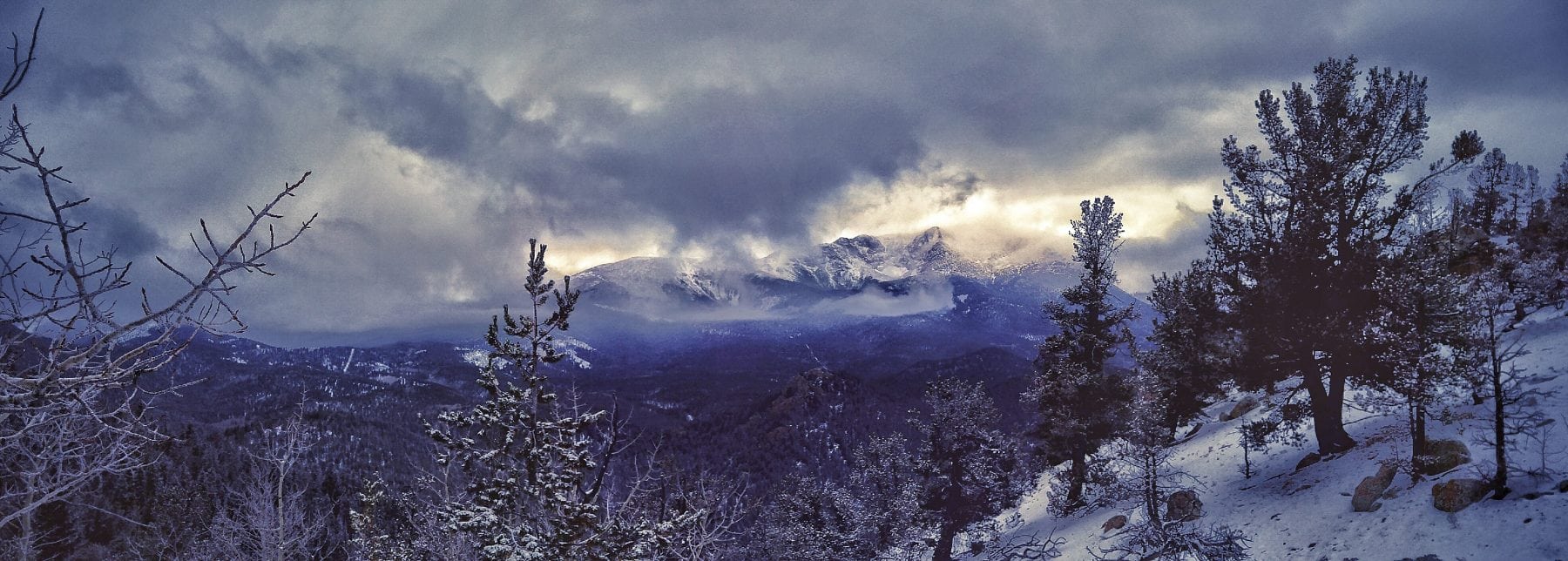I remember the days well. They started early, typically before sunrise. The air was often cold and crisp. The woods quiet, save for the hum of Highway 80 far below, the sounds of a few small critters, and the occasional crack of a rifle. On good days, that crack came from me or my dad, but most days we were merely anxious evesdroppers. And still, whether we were ‘crackers’ or ‘evesdroppers,’ hunting with my dad was always pretty great. There weren’t really any bad days out there in the woods.
Mornings started the same. Wake up, eat breakfast, get dressed (often with enough layers to clothe a family of 16), and head out the door. Sometimes the first leg of the journey was done on a four wheeler or in a vehicle. Other times it began on foot, right from the cabin. As we picked our way through the dense forest, I would try hard to be quiet. Navigating my way through the rocks, leaves, logs, and sticks, I would follow my dad to our ‘spot.’ Sometimes there would be a bit of a trail to follow, but many times we would be off trail. Ridgelines, distinct trees, and other such features served as navigational tools. Sometimes we might miss our mark by a bit and have to readjust, but in the end we could pretty much always find our destination.
Once at our spot, we would hunker down. Sometimes we would sit together. Other times, my dad would wander off a ways, leaving me to hunt one section of the mountain while he focused on another. Eyes peeled and ears perked, I would sit at the base of a tree and wait. On cold days, my toes would freeze and my dad would tell me to wiggle them. On good days, deer, turkey, bear, and/or coyotes would appear. On really good days, we would get the right animal at the right time and place. But to be honest, much of the time I just stared at the woods, and sometimes checked my Rip Van Winkle eyelids for cracks. Those investigations may or may not have been quite thorough.
At the end of the day, as daylight waned and a hot meal beckoned, we would gather our things and head for the cabin. Sometimes on the way back, my dad would stop and ask me a very simple question, “Which way is the cabin?” To be honest, I wasn’t always certain what the right answer was, but I would give it a shot anyhow. Right or wrong, making an effort to answer that question was always a good exercise. For you see, Pennsylvania forests are dense and vast. They can stretch for miles and miles. Choose the wrong direction and it could be a long time before you come across any sort of road, house, or even a good lookout point. It is this sort of landscape that makes a good sense of direction and a knowledge of your surroundings so valuable.
I haven’t gone hunting in a while, but over the years I have learned that knowing your landscape is more than a means to not get lost. It’s a way to feel connected to, and maybe even accepted by, a place. When I was young, I spent a lot of time exploring the woods behind my parent’s house. The more I explored, the more connected I got. It was fun to feel as though you knew something like the back of your hand, to know all the shortcuts, secret spots, hills, valleys, lakes, creeks, and everything in between. Even though I live and run in Colorado now, I still feel very connected to Pennsylvania. When I go back for visits, I love running through the woods that I grew up in. It’s a very familiar and special place to me. It just feels like home.
Yet as much as I love returning to my old stomping grounds, I have also learned that there is great joy in learning a new place. I’ve lived half way up Pikes Peak in an off-grid cabin (Barr Camp) for about two-and-a-half years now. I’ve spent a lot of that time running on the wonderful network of trails that surround the cabin. Training on these trails has given me what some would think to be a really good knowledge of the land. In a way, they would be correct, for I know a lot about the trails and how you can link them together to create all sorts of different routes. However, this past year, I have spent a lot of time venturing away from the trails. In fact, I wouldn’t be surprised if less than 10% of my running since The North Face 50 Mile has been done on standard routes. My time away from the trails, time spent exploring swamps and creeks, peaks and valleys, meadows, cliffs, and ridgelines, has given me a far more intimate knowledge of the mountain. I’m no longer dependent on a trail to get me between points A to B. I’m learning where ridges end up and drainages empty out. I’m constantly finding new rock outcrops, meadows, aspen groves, and swamps. More than just finding them, I am also figuring out how to connect them as I wander about, creating my own routes.
Like my childhood adventures in the Pennsylvania woods, these explorations make me feel more connected to my adopted home here in Colorado. A place that was once so new to me is beginning to feel like the back of my hand, like a place I can call my own. Not that it actually is mine, for a mountain doesn’t seem like the sort of thing one can truly own, but it grows a bit homier with each trek through the forest. It’s like a relationship that gets stronger with each conversation. But, these explorations aren’t about shooting the breeze. No, these are the good, and sometimes hard conversations. The ones that dig deep into the heart of things. The ones that strike nerves, wrench stomachs, and conjure up tears. Sure, the valleys can be deep and the climbs steep, but the relationship that is formed by enduring the pain is like no other.
In running, this concept is quite simple. We explore. We learn. We connect. We grow. It’s easy to do with trees, creeks, and meadows. It’s much harder to do with people. And yet, I don’t want to go through life with just a bunch of groomed trail relationships. Such relationships can be fun, but they only go so deep into the woods. They stick to the path where the signs are clear and the footing is good, but they don’t dive in. They don’t give us the full experience.
Some relationships in life are bound to be like this: fun and lighthearted. That’s okay. It’s perfectly fine to enjoy some buffed-out California groomers from time to time. That being said, a person ought to muster up the courage to step off the trail. We must ask the hard questions, say the things we’re scared to, and hold a steady line when the ridge gets sketchy and the cliffs drop steeply. If we do this, we’ll likely break into a new level of understanding and connection. At first it may be a bit stressful. Bushwhacking through a dense forest can be like that. Sometimes there is just a lot of junk to hack through. However, each day of exploration brings a bit more understanding. You may not always know exactly what to say or do, but with time you become more and more comfortable. This person whom you once barely knew starts to feel a bit more familiar, a tad more like home.
It’s a scary thing to venture into the unknown. But do it enough and the unknown becomes the known. The known becomes the familiar. And the familiar becomes the closest of friends. Sure, you can stay on the buffed-out switchbacks and smooth lines, but there is an adventure waiting to be had somewhere deep in that forest. Don’t miss out by taking the same old route all the time. Mix it up, venture out, and learn the trek to the cabin like the back of your hand (and in 20 different ways).
Call for Comments (from Meghan)
- Do you know your home terrain like the back of your hand? Can you walk off the trail and into the woods or the rocks or whatever is there and find your way back out again? Or are only certain parts of it familiar to you?
- How does your connection to a natural place relate to your understanding of it?

